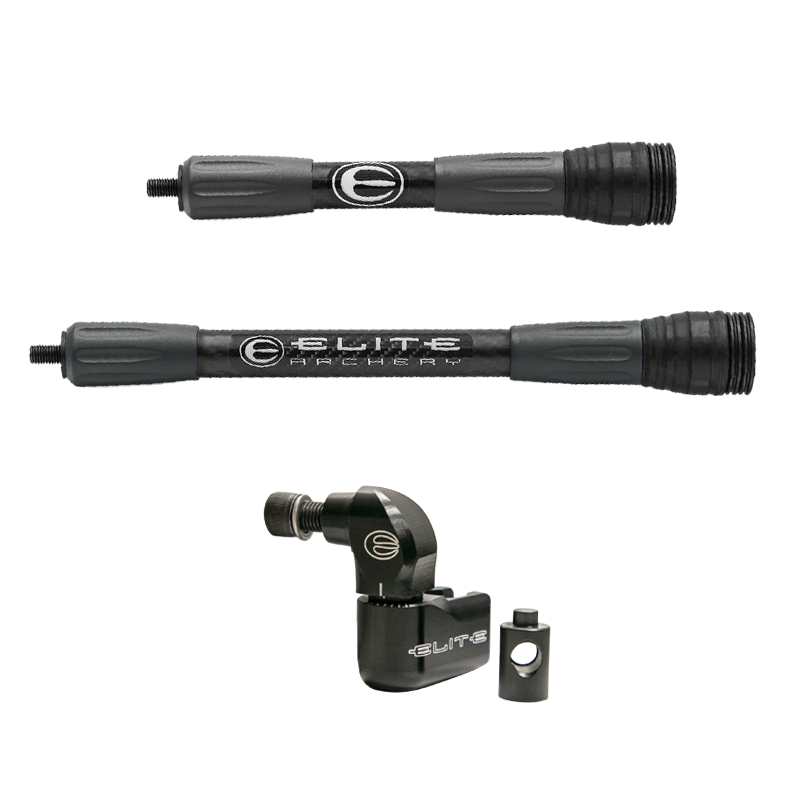Optimize Your Archery Precision With These Bow Stabilizer Strategies
One vital element that can considerably affect your performance is the proper application of bow stabilizers. Whether you are a seasoned archer looking to improve your skills or a beginner eager to enhance your accuracy, understanding these bow stabilizer strategies can be the secret to striking your mark with exceptional uniformity.
Advantages of Utilizing Bow Stabilizers
Utilizing bow stabilizers can dramatically enhance an archer's precision and general efficiency by minimizing bow torque and vibration. Bow torque, brought on by the unequal distribution of weight in the bow, can cause incongruities in shot placement. By attaching a bow stabilizer, the weight is redistributed, minimizing the effects of torque and aiding the archer attain a much more consistent shot. Furthermore, bow stabilizers wet vibration, which not just enhances the convenience of capturing but also avoids the bow from jumping upon release, thus aiding in keeping appropriate objective.
In addition, bow stabilizers can assist in holding the bow stable, particularly during windy problems or when firing from longer distances. The added weight at the front of the bow provides stability and equilibrium, permitting the archer to concentrate on intending without the disturbance of bow movement. In general, the benefits of utilizing bow stabilizers prolong beyond simply precision, improving the archer's experience and efficiency in numerous shooting circumstances.
Choosing the Right Bow Stabilizer
Selecting the proper bow stabilizer is vital for maximizing your archery devices and improving shooting efficiency. Larger stabilizers can aid reduce bow torque and absorb even more resonance, leading to a steadier aim.

Last but not least, take into consideration the design of the stabilizer. Some stabilizers come with flexible weights or dampeners that enable you to personalize the equilibrium and feel of your bow. Inevitably, choosing the appropriate bow stabilizer involves locating an equilibrium between weight, product, style, and size to enhance your capturing precision and total efficiency.
Proper Installation Techniques
To make sure optimum performance and safety and security in archery, mastering appropriate setup techniques for your bow stabilizer is vital. The initial step in installing a bow stabilizer is to recognize the right placement on your bow. The majority of stabilizers are connected to the front of the riser, listed below the grasp, to assist counterbalance the weight of accessories such as views and quivers. Ensure that the stabilizer is not conflicting with other elements or hindering your capturing kind.
Next, securely attach the stabilizer to the bow utilizing the ideal mounting hardware. Some stabilizers come with adjustable weights that can be included or gotten rid of to tweak the equilibrium of your bow.

Adjusting Stabilizer Weight and Size
After making certain the proper setup of your bow stabilizer, the following action entails adjusting the weight and length to enhance its performance in improving archery accuracy. The weight of the stabilizer plays a crucial role in decreasing bow activity during the shot cycle. Including weight to the stabilizer can help wet vibrations and improve stability, resulting in even more accurate and regular shots. On the other hand, decreasing the weight can boost maneuverability, which is valuable for scenarios needing quick target procurement.
When it comes to stabilizer length, discovering the best equilibrium is essential. A longer stabilizer can offer greater security by raising the range in between the bow and the weight at the end of the stabilizer. This included range improves the stabilizing effect, especially in gusty problems or when contending longer distances. On the other hand, a shorter stabilizer uses more ability to move and might be navigate to this site liked by archers who value agility and quick activities during capturing.
Advanced Stabilizer Tuning Tips
Achieving optimal bow security and accuracy in archery requires a nuanced strategy to sophisticated stabilizer tuning. Advanced stabilizer tuning includes fine-tuning various elements to enhance the bow's balance, reduce resonance, and enhance overall accuracy.
Another important aspect of advanced stabilizer adjusting is enhancing the damping buildings of the stabilizer system. This can be achieved by incorporating added wetting devices such as rubber dampeners or harmonic stabilizers to additionally lower resonance and sound. Moreover, discovering various materials for the stabilizer building, such as carbon fiber or light weight aluminum, can additionally affect the bow's efficiency by altering its weight distribution and tightness. By meticulously make improvements these innovative stabilizer components, archers can maximize their precision and consistency on the array or in competition.
Conclusion
In conclusion, maximizing archery precision can be accomplished with the proper option, setup, and adjustment of bow stabilizers. By comprehending the advantages of making use of stabilizers, selecting the appropriate one, and tweak its weight and size, archers can boost their shooting accuracy. Using advanced adjusting techniques can even more enhance stability and consistency in arrow trip. In general, incorporating bow stabilizers into archery method can bring about improved performance and enhanced precision.
Making use of bow stabilizers can significantly enhance an archer's precision and general efficiency by lessening bow torque and vibration. Longer stabilizers supply higher security and balance, especially for long-distance shooting, while much shorter stabilizers use even more adaptability useful source and are less complicated to maneuver in tight rooms (bow stabilizer). Carbon fiber stabilizers are durable and lightweight, while aluminum stabilizers are durable useful link and supply outstanding resonance wetting
A longer stabilizer can supply better stability by boosting the distance between the bow and the weight at the end of the stabilizer.Another vital element of innovative stabilizer tuning is optimizing the damping residential or commercial properties of the stabilizer system.